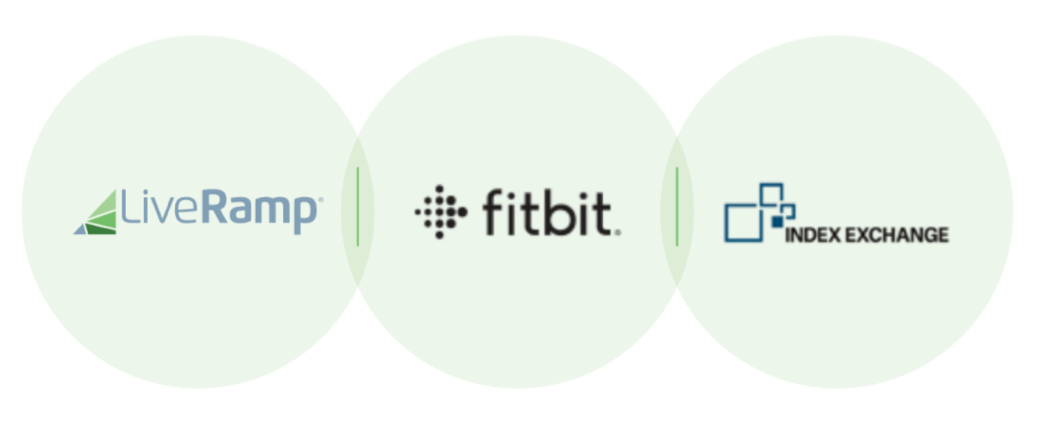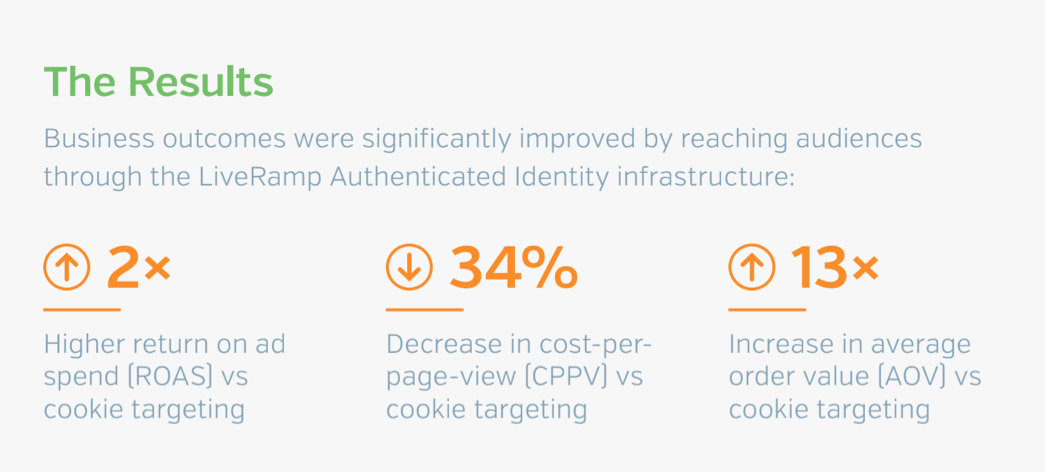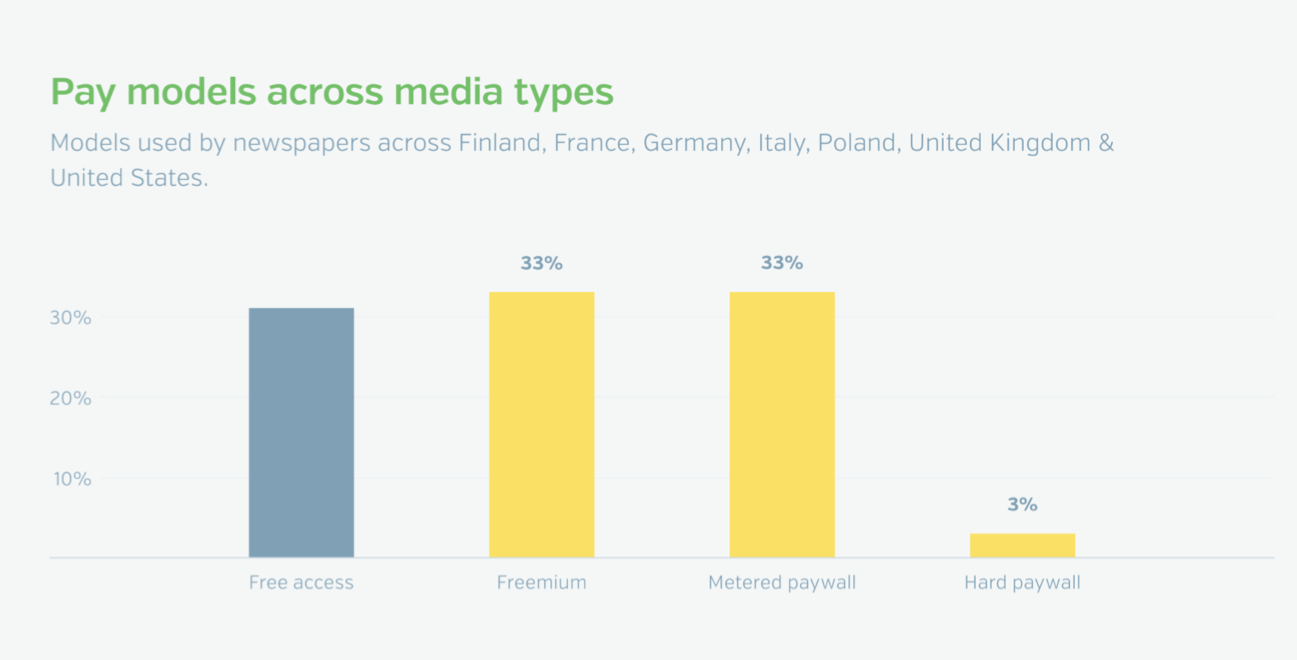
According to survey data, ad buyers for brands and agencies are more concerned about the effects of the end of third-party cookies than publishers are. When asked if they were worried about their ability to target ads, 76% of advertisers agreed with this statement compared with 54% of publishers.
The stats could be interpreted in a few ways: either publishers have already found an alternative solution to third-party cookie ad personalisation/measurement; are pinning their success on the strength of their own first-party data; or have pushed it back on their priority list to be dealt with at a later date.
We are seeing the dialogue in some publisher circles, in the majority of cases, publishers are pushing it back. Although COVID-19 may be to blame for a shift in priorities, publishers who fall into the last camp would be well advised to see Google’s January 2022 date as a timeline and not a deadline. Upon announcing the culling of third-party cookies, Google’s
Justin Schuh stated that the changes would take place “within two years”, suggesting they could pull the plug at any time of their choosing. So, why wait until third-party cookies have been completely erased before acting? The attrition rate of cookies is already starting to be felt (Safari and Firefox, who have a combined market share of around 36%, have already stopped supporting them), which is why now is the time for publishers to set themselves up for success.
LiveRamp has produced this Deep Dive special in partnership with ExchangeWire. LiveRamp connects people, devices and data across the physical and digital worlds, enabling more personalised, intimate connections between brands and consumers. LiveRamp provides a suite of enterprise customer management software, helping organisations better leverage data to deliver innovative products and meaningful experiences. Powered by its core capabilities in data accessibility, identity, connectivity and data stewardship, LiveRamp makes it safe and easy to connect the world’s data, people and applications.
This Deep Dive special is written by Zara Erismann (pictured below), MD publisher Europe, LiveRamp, and covers:
- People-based marketing as a post-cookie targeting approach
- Debunking the authentication myth
- Authentication in action – a case study with Fitbit
- User authentication strategies
- The future of identity
A new approach
The death of cookies shouldn’t be seen as a problem, but rather an opportunity for the industry to re-architect a more valuable ecosystem built on trust — something which the sector desperately needs. Embracing this new vision will be a win-win-win scenario for individuals, brands, and publishers.
Clearly first-party data is going to become much more sought after, and publishers will be looking at different ways to gain that all important opt-in. We’ve already seen News Corp, The Guardian, and Mail Online actively pursue beyond- the-cookie strategies that prioritise identifying audiences using first-party data. This includes, in some cases, a rise in the prominence of second-party data partnerships with advertisers.
For a time, many suggested that device fingerprinting or device identification would offer a compliant alternative to cookies, because the information is stored as a string of numbers and letters rather than raw personal data. But while fingerprinting does identify a particular device, there are privacy concerns. Specifically, users browsing a website are often unaware of the existence of fingerprinting, and it’s difficult to block since sites need to read this information for web pages to display correctly on a specific device. In that sense, fingerprinting only solves part of the third-party cookie conundrum, replacing a device-based people proxy with an even less transparent and trustworthy alternative that browsers are actively combatting.
Yet there is a solution that can work and provide far greater benefits than third-party cookies and fingerprinting: people-based marketing supported by an authenticated identity infrastructure that has privacy and trust at its core.
What is people-based marketing?
People-based marketing actually originated from Facebook in or around 2014. It allowed marketers to target campaigns to the social media giant’s vast user database using information about individual’s interests, characteristics, affinities – everything except their real names.
Today, the term “people-based marketing” has grown outside of Facebook’s walled garden and become more widely adopted by the industry. Given the success of the walled gardens created by Facebook and Google, it’s easy to see why. But people-based marketing can be extrapolated across the open internet for the benefit of individual publishers.
At LiveRamp, we’ve been enabling marketers to transact on a true people-based identifier since 2016, and in 2019 we launched our Authenticated Traffic Solution (ATS), which is a privacy-first solution focused on empowering publishers to enable addressability without third-party cookies.
So how does LiveRamp ATS work?
With ATS, when a user authenticates by logging in or providing their email address, the publisher uses javascript or calls our API to pseudonymise any personal data and look up the corresponding IdentityLink. The IdentityLink is returned to the publisher in an encrypted envelope and stored in a first-party cookie or via the publisher’s CDN.
The SSP is then able to decrypt the IdentityLink envelope and translate it in real time to be DSP-specific. This ensures that the IdentityLink is different for each platform that receives it, making for best-in-class security and privacy.
The newly encoded IdentityLinks are then passed to DSPs in the bid request to allow the DSP to decide on that impression. Further, the SSP can also match the IdentityLink to publisher and marketer first-party audiences for PMP deals.
The DSP makes an informed bid with onboarded data from LiveRamp and, if they win the auction, their ad serves and they record the impression in their exposure logs. This ensures that marketers can measure every impression they buy, doing away with buying an impression that cannot be tied to a ROAS.
Debunking the authentication myth
Many mistakenly believe that authentication always corresponds with a login. While this is often the most common method, there are alternatives. It could instead be active participation in a user forum, or indeed anything that demonstrates an opt-in from a user with their consent.
To get that opt-in, you need to clearly establish a value exchange with your users. This could manifest itself in a number of different ways, but you need to put the user experience at the heart of it and work backwards from there. For example, if you run a news site, you could offer the user the ability to tailor their newsfeed to their preferences, based on subjects that interest them. Whereas a fashion site might find that its audience will happily consent to receiving personalised adverts based on their preferences, as they tend to show a keen interest in discovering new brands, other audiences may find this less to their taste. Therefore, you need to personalise user experience based on how each individual has provided their consent in order to achieve the best results.
Being able to offer a value exchange that the user is comfortable with and in control of gives publishers a far more valuable commodity to offer advertisers and, in turn, monetise more efficiently.
You need to personalise user experience based on how each individual has provided their consent in order to achieve the best results.
Why it matters
Most people are happy to consent to their data being used as long as they know where it is going. The upshot of this is that it enables the industry to provide a more personalised and improved experience. Publishers need to pay attention to this, as it could form the basis for sustainable revenue models by bringing something valuable to individual users.
Wheels are already being put in motion that could have a lasting impact on the future of publishing and make or break trust at the same time. Just look at the ongoing cuts being made to journalism jobs, many of which have been replaced with robots (despite AI not being infallible).
It is getting tougher to fund quality journalism, which is why the BBC has been championing the need for the private sector to subsidise local journalism jobs as part of an extension to its Local Democracy Reporter scheme. Yet these schemes can be limited in success, which is why people-based marketing strategies and publisher-supported advertising solutions that make inventory addressable are the key to keeping the internet open.
Society needs publishers to thrive, and future monetisation depends on publishers utilising the best identity tools available. Yet technology exists that can facilitate a better way for publishers to build trust with their audiences while enhancing monetisation from brands, which is why it’s time for them to start leveraging people-based identity.
Authentication in practice — case study with Fitbit

The challenge
Health and fitness technology brand Fitbit wanted its media agency to help prepare it for advertising after the deprecation of third-party cookies. Fitbit needed assurance that it could still reach its high-value audiences and measure on the same outcomes when using the LiveRamp Authenticated Identity Infrastructure.
The solution
Through LiveRamp’s integration with leading SSP Index Exchange via Matched Audiences, Fitbit’s media agency was able to reach Fitbit’s high-value audience with a deal ID built to leverage the LiveRamp Authenticated Identity Infrastructure. Fitbit wanted to directly match its audience with high-quality publisher inventory without the need for third-party cookie syncs for a seasonal Father’s Day campaign.
Fitbit’s media agency advised it on a test design and implementation that compared reaching audiences on cookies and through LiveRamp. The test was designed to use the same audience definition, keeping other variables constant with the difference being the identifier type that was targeted.

The business outcomes were an overwhelming success for Fitbit and its media agency. LiveRamp and Index Exchange were able to show Fitbit it could not only transition seamlessly to targeting without third-party cookie syncs but that it could also achieve 2x higher ROAS compared to cookie targeting. Fitbit’s CPPV also decreased by 34% vs the control group using cookie targeting, offering Fitbit greater efficiency for its investments. Additionally, Fitbit saw a 13% increase in their AOV, proving that audiences reached were of higher value than targeting on cookies. These results validated that the LiveRamp Authenticated Identity Infrastructure was both a viable solution for a world without cookies and can be leveraged today to deliver significantly better returns and efficiencies.
Since Fitbit has only a few major campaigns during a year, it was important to test and benchmark results before it was no longer able to leverage these learnings. Having unlocked these insights, it is now able to prepare for its next campaign (the all important Holiday retail push) with the confidence that it will be maximising its reach effectively and efficiently. In addition, based on the fact that 100% of its impressions are measurable with LiveRamp’s Infrastructure, its investments are more accountable and it can now plan for and execute an optimisation plan that will further drive greater impact during this critical year-end retail period.
This test created excitement across Fitbit as well as its agency partners, providing it with the confidence to expand its advocacy across the rest of its client accounts that will benefit from LiveRamp’s Infrastructure.
LiveRamp’s Authenticated Identity Infrastructure technology allowed us to effectively expand reach against target audiences and drive significant ROI without relying on traditional digital user IDs. We look forward to watching this solution continue to evolve and increase in adoption as third-party cookies are headed towards obsolescence for both addressability and measurement purposes.
Jay Newell, senior director, media & customer acquisition, Fitbit
Strategies for authenticating users in the age of identity
The fabric of the digital advertising infrastructure upon which publishers have relied for two decades is being ripped up.
Deprecation of third-party cookies, Apple’s decision to delete most first-party cookies after seven days, the switching of iOS’ IDFA to opt-in by default and ripples from GDPR and CCPA. These headwinds have added some real friction to ad targeting and measurement as we know it.
Yet, despite the changes threatening audience activation, retargeting, media attribution, frequency capping and audience insights, a recent survey for LiveRamp found 42% of publishers do not have a solution for identifying audiences for targeting after cookies are turned off.

But a more effective alternative to third-party cookies, built on trust and transparency, is already emerging in its wake. And, unlike so many existing advertising solutions, this time it’s all about nurturing audiences — meaning publishers are already well placed to capitalise.
The most effective solution for publishers is to gain authenticated audience data — be it an email address, phone number, or social login — in exchange for valuable content or services. This approach rebuilds consumer trust and increases their privacy by utilising consented, opt-in relationships with clear privacy policies. And it ensures publishers maintain control of their first-party data.
Solutions like LiveRamp’s Authenticated Traffic Solution (ATS) that help publishers build an effective authentication strategy also enable them to grow as a result of being able to safely connect their inventory to the advertiser’s target audiences, giving them a competitive advantage in the marketplace.
So, what strategies can publishers use to encourage authentication via value exchanges and transform their advertiser offering?
1. Email newsletters

Email newsletters are a low-investment and direct avenue to build visitor engagement, whilst also offering broad-based publishers the opportunity to hone in on specific audience interests. It’s important not to underestimate your existing database as your existing data is a particularly good way to accelerate the volume of identifiers for a publisher.
- Make it obvious: Often, visitors don’t realise newsletters, especially new ones, exist – so make it clear via a mechanism such as an interstitial or pop-up.
- Offer an incentive: Prizes, discounts and rewards, especially those tailored based on audience behaviours or preferences, may be the motivator readers need to become subscribers.
- Leverage social proof: Subscriber testimonials play a big role in the psychology of subscription. Deploy real reviews to drive word-of-mouth awareness and new sign-ups.
- Don’t be intrusive: Be judicious with both the frequency of sign-up invitations and the volume of subsequent emails. After all, poor engagement metrics aren’t going to impress a marketer.
2. Social logins
Allowing sign-up using a third-party account from Google or Facebook reduces registration friction. Locate logins at high-engagement points: As social logins reduce the steps required to creating an account with a publishers, placing them at points like a comments section is a good way to convince readers who may be keen to engage but otherwise may have shied away from multi-step registration.
- Choose logins wisely: Should you offer Facebook authentication or Google? Knowing your audience will inform your technology choice.
- Make the option visible: Although social logins reduce friction, audiences cannot take advantage of them if they don’t know where to find them. So don’t hide the option.
3. Subscription offerings
Despite historic scepticism, some 69% of newspapers now operate some kind of charging model, according to Reuters Institute for the Study of Journalism. For many, the switch to paid has helped bolster the bottom line.
But, whilst it is publishers’ subscription teams that have come to lead their “audience” business, advertising, too, can benefit. Over the next year, we are likely to see less separation and more activation of audience data by both business teams.
- Audience data: Audience profiles can be effectively monetised when deployed in programmatic environments such as a publisher’s supply-side ad platform or in direct commercial partnerships with brands.
- Go niche: Special interests have special value. Create more defined audience groupings, which can work harder for specified advertisers. Look for opportunities to peel subject-specific newsletters off from general-interest content. For example, why cover only “football” when you could offer the ultimate Liverpool FC dispatch?
- Stay close: Visitors need to be on board with any subscription launch. Stay in close communication to establish appetite and price tolerance.

4. Paywalls
Subscription publishers often consider letting a portion of content go free as a key part of a freemium strategy, focused on driving paid sign-ups. In 2019, Hearst Newspapers authenticated 100,000 email addresses by launching a registration wall ahead of introducing a paywall for its Connecticut newspapers.
But paywalls don’t have to just serve as the top of a subscription funnel. They can also transform advertising, through valuable data capture. They can take many forms:
Email interstitial: Invites email sign-up for opportunities for additional engagements such as a newsletter, without truly gating-off content.
- Hard paywall: Block access to content until authentication or subscription occurs.
- Freemium wall: The majority of content remains free to access, but a portion remains reserved for subscribers.
- Metered paywall: Free access within a specified article threshold.
- Dynamic paywall: The most sophisticated content walls leverage behavioural data into a propensity model to identify the most effective point at which to raise the wall, particularly for key segments.
5. Gated and premium services

Users experience a particular kind of value when the exchange goes beyond transfer of the regular kind of content they were already used to.
When publishers can successfully provide utility, they stand a fantastic chance of gaining a loyal, opted-in user. This requires more “product” thinking than “publisher” thinking. Here are some examples:
- Sports publishers: Give the ability to follow specific teams, or launch high-engagement fantasy leagues.
- Gamification: Offering emoji packs or achievement tracking for first forum posts can not only drive up sign-ups but also foster community and brand affiliation.
- Retail: Enabling new-product notifications helps niche vertical users indulge their passion.
6. Test and learn
Few of us get it right the first time. Modern publishers have become accustomed to iteration – and authentication strategy is no exception. After all, every publisher’s audience is different, and no single playbook is one-size-fits-all.
- Cover all the cohorts: Are city-dwellers more likely to share data than those in suburbs or rural areas? Factor geography into your A/B testing to seek out surprising attitudinal pockets in your user base.
- Make the cause clear: When The Guardian began testing a registration wall in December 2019, it didn’t just make the tests clear, it made the necessity — framing the yields that come from people-based advertising as part of the quest to sustain high-quality journalism. Such early transparency sets an important foundation of empathy and trust.
- Use house ads to push premium services and content: Not every ad on your property needs to be on behalf of someone else. Try advertising your new services or premium subscriptions on your own property. You already know they’re interested in what you have to offer, otherwise they wouldn’t be there.
The future of identity
The publishing industry is going through its most profound period of upheaval in years. Suddenly, the old targeting norms are no longer fit for purpose.
But the ecosystem that is emerging is one which better aligns the interests of publishers and audiences alike.
Publishers have a rich palette of options for turning their loyal audiences into authenticated users, restoring their primacy in the supply chain and reinvigorating consumer control. This marks the beginning of a reimagining of the industry, and publishers now have a chance to utilise the tools at their disposal to build a trusted and transparent ecosystem.
LiveRamp’s Authenticated Traffic Solution (ATS) is one such tool that enables publishers to effectively create addressability at scale from first-party data rooted in consumer consent and a trusted value exchange.
The publisher benefits of using ATS include:
- Increased programmatic revenue on data-driven and cookieless inventory
- Support of innovative and privacy-centric reader engagement models
- Increased advertiser demand while maintaining a responsive user experience
Through ATS, LiveRamp is laying the foundation of a trusted ecosystem with consumer privacy at its heart, which provides a clear, fair value exchange for publishers and marketers.